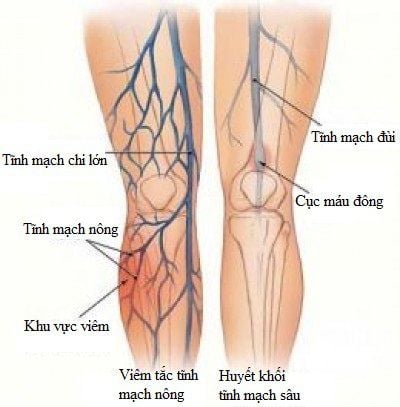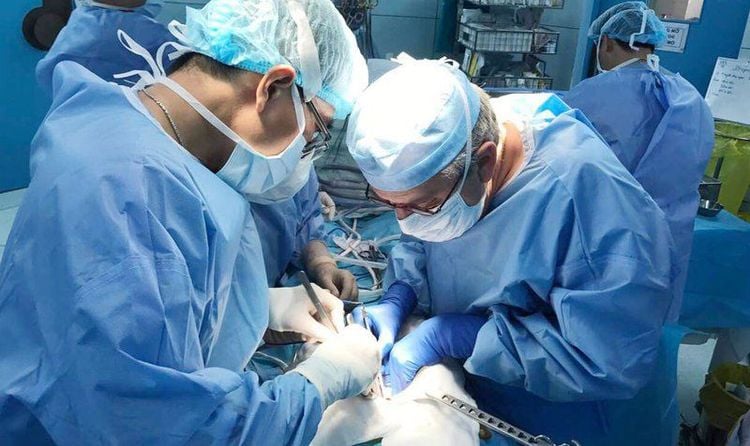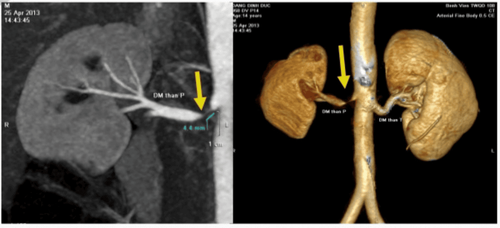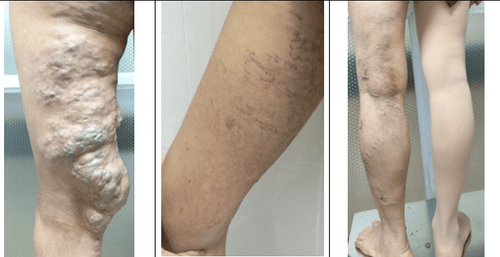This is an automatically translated article.
Ischemic limb syndrome is the result of many different diseases that cause narrowing or blockage of the arteries that supply blood to the limbs. This is a very dangerous disease that cannot be cured on its own and needs to be treated with endovascular interventions.
1. What is severe limb anemia?
Severe limb ischemia is a severe blockage of an artery, reducing blood flow to the extremities (arms, legs, and feet) causing pain and soreness.
2. Causes of severe limb anemia
The cause of severe limb ischemia is a sudden rupture of one of the large arteries supplying the extremities, causing the patient to have lower limb ischemia. Due to an injury that causes an artery injury or an artery blockage due to a blood clot, or a foreign object entering from another place, the artery is blocked. The limb ischemia is classified into 3 levels: acute limb ischemia, chronic limb ischemia and subacute limb ischemia.

Huyết khối gây tắc động mạch chi dưới
3. Signs of severe limb anemia
Severe ischemic disease often begins with a stroke. Foot ulcers, infections or ulcers that do not heal or heal very slowly. Feeling of numbness in hands and feet, reduced sensation on the extremities, cold extremities. After a while, pain in the extremities and gradually lost sensation in the extremities, more seriously, led to limb necrosis.
4. What is endovascular intervention for severe limb ischemia?
Currently, with modern technology and medical development, for patients with severe limb ischemia, doctors will perform endovascular intervention to treat severe limb ischemia. This is a new method to effectively treat severe and complicated injuries with anemia, and the method brings high safety, without surgery.
The method of endovascular intervention (English name: Subintimal technique) is a subendothelial dissection that was first applied in 1987. Currently, this technique has been improved, developed and applied. Widely used to treat patients with lower extremity artery occlusion.
Endovascular intervention method is both effective and has a high success rate. However, this is a complicated method, vascular occlusion - the main cause of severe limb ischemia usually occurs on a long segment of the vessel, while the human vessel wall is very thin, very easily broken during the procedure. devices outside the circuit. Therefore, it is required that the doctor or the person performing the method must have high expertise and skills to skillfully manipulate the procedures and approach the system, which can be accurately evaluated.

Can thiệp nội mạch đòi hỏi bác sĩ thực hiện phải có chuyên môn tay nghề cao
5. Notes after endovascular intervention to treat severe limb ischemia
After about 1 to 2 weeks of rest, the patient can walk and work normally. However, the patient should pay attention:
Limit going up and down stairs to avoid having to bend and flex the limb. Short walk. Do not do heavy work to avoid putting pressure on the bones. If the incision to insert the catheter is bleeding or swollen, the patient should lie down, apply pressure to the wound for 30 minutes to stop the bleeding. Drink a lot of water (except for people with severe heart failure), eat a lot of green vegetables, fruits, don't drink alcohol, stimulants, tobacco, etc. Do gentle exercises. Follow up with the doctor on time. request. Any questions that need to be answered by a specialist doctor as well as if you need to be examined and treated at Vinmec International General Hospital, you can contact Vinmec Health System nationwide or register online. online HERE.













